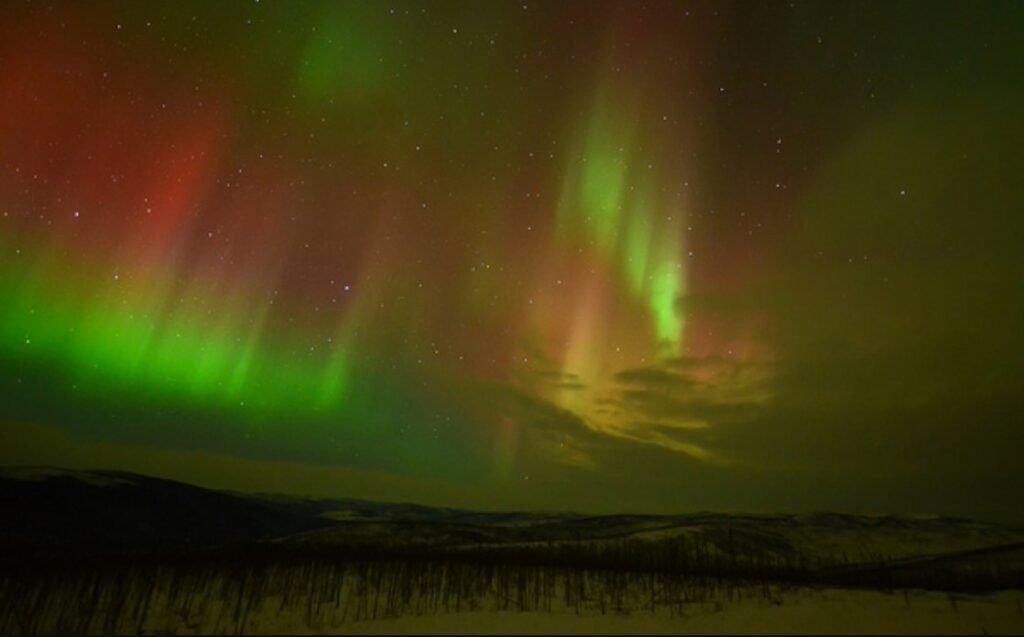A large coronal hole on the sun has triggered a geomagnetic storm that could produce stunning auroras in the northern US this week.
A coronal hole is a region of the sun’s outer atmosphere, or corona, where the magnetic field is open and allows solar wind to escape. Solar wind is a stream of charged particles that flows from the sun at speeds of up to 800 km/s. When the solar wind reaches Earth, it interacts with the planet’s magnetic field and can cause geomagnetic disturbances.

How does a geomagnetic storm affect Earth?
A geomagnetic storm is a temporary disturbance of the Earth’s magnetosphere, which is the region of space around the planet that is influenced by its magnetic field. A geomagnetic storm can have various effects, such as:
- Auroras: The most visible and beautiful effect of a geomagnetic storm is the aurora, or the northern and southern lights. Auroras are caused by the collision of solar wind particles with atoms and molecules in the upper atmosphere, which emit light of different colors depending on the type and altitude of the gas. Auroras usually occur in high-latitude regions, such as Alaska, Canada, Scandinavia, and Antarctica, but during a strong geomagnetic storm, they can be seen in lower latitudes as well.
- Satellite disruptions: A geomagnetic storm can also affect the operation of satellites in orbit, especially those in low-Earth orbit (LEO), which are closer to the Earth’s magnetic field. A geomagnetic storm can increase the density of the upper atmosphere, which causes more drag on the satellites and can alter their orbits. A geomagnetic storm can also damage the electronic components of the satellites and interfere with their communication and navigation signals.
- Power grid fluctuations: Another potential impact of a geomagnetic storm is the induction of electric currents in long conductors, such as power lines, pipelines, and railway tracks. These currents can overload the power grids and cause blackouts, voltage spikes, and transformer failures. The most severe geomagnetic storm in history occurred in 1859, known as the Carrington Event, which caused widespread telegraph disruptions and auroras as far south as Hawaii and Cuba.
When and where to see the auroras?
According to the US National Oceanic and Atmospheric Administration (NOAA), a G1 (minor) geomagnetic storm watch is in effect for December 7 and 8, 2023, due to the influence of the coronal hole. This means that there is a chance of seeing auroras in the northern US, especially in states such as Montana, North Dakota, Minnesota, Wisconsin, Michigan, and Maine. The best time to see the auroras is at night, when the sky is dark and clear. The best place to see the auroras is away from city lights and other sources of light pollution. The auroras can appear in various shapes, colors, and intensities, depending on the strength of the geomagnetic storm and the location of the observer.
To check the current aurora forecast and activity, you can visit the NOAA Space Weather Prediction Center or the Aurora Service websites.
